My Lola would have a budget and a time limit, so as not to be carried away with buying too much. Her motto was, “Buy only enough that you can carry…” By Eve
EVE’s EXPERIENCE:The Farmers Market in Cubao was the first fresh, produce market I went to when I was a teen-ager accompanying my grandmother , Lola Pancing Llorca Candelaria during her shopping dates, every Friday afternoon. My Lola ( grandmother) always went to Farmers, to shop for ingredients to prepare one of her special meals. My Lola taught me that good cooks started with very fresh ingredients and insisted I learn how to buy seafoods, meat, vegetables, and fruits in season, when these are abundant and less expensive.

My Lola would have a budget and a time limit, so as not to be carried away with buying too much. Her motto was, “buy only enough that you can carry…”, so with this in mind, my first objective was to set out with the intention to shop on a budget of P1,500 ( more or less equivalent to US$35.00) to buy food enough for 3-4 days.

First, I had to get organised and determine where I should go first. Farmers market has a paid parking lot across the street by the entrance, nearest to the fruit vendor stalls up front. Fruit vendors are along the entrance area, then further inward , there are vegetable stalls, and down to the lower area, are the fish, and meat sections. Dry goods selling everything from water pails, plastic containers, “walis tambo” or “walis ting-ting” (brooms), “bayong” or baskets woven from palm tree fronds, to wooden twigs, dried noodles, and canned goods , are located on the far right, upper section on the other side of the fruit vendors.The delivery area, where the styrofoam crates, and “banieras” or large basin type containers of fish and crushed ice, are unloaded from the docks of Manila, are on the far left on the lower section. My route would be to go down to the second level, buy fish, then work my way back up towards the veggies sections, and lastly to the fruit stands, then go across to the parking area and store my fish in my own coleman ice chest.
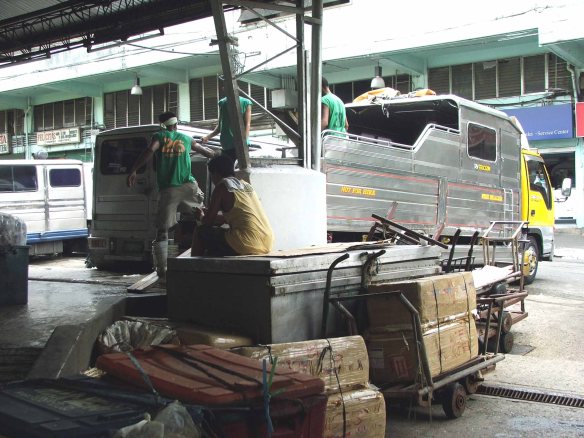
Secondly, I wanted to canvass prices among the stall vendors located from the aisle to the inner core of the market. I had to see how much produce could I get for my budgeted amount. I set my time limit to buy seafoods in the centre of the market first, then on my way out, buy vegetables next, and lastly, go to buy fruits in season.
Once I knew where the vendors of certain types of fish I preferred were located, I had to bargain fast, and have everything gutted and cleaned , and put into my bag. One thing to remember when buying fish, the vendors who clean fish normally handle money even with their hands all wet, bloody and smelling of fish. They have a can or plastic container where they place their money above the fresh fish, and they will reach in and out of their cash can during transactions.
There are no cash registers, or credit cards in the market. Everything is on a cash and carry basis. A vendor will receive your money, and if it is not exactly the amount of the price of the sale, expect the vendor will literally hand you change for your purchase amount. I found that if I used a plastic bag to put my budgeted cash, and pay the vendor, he or she would drop in the plastic bag, the change, and I could just twist the top of the plastic bag, and continue on without opening and closing my wallet.
I know that I would be carrying the weight of several kilos of produce, and once my shopping bag would reach its maximum capacity of 5 kilos, I would be done. I would have to be able to finish my shopping, get to my car across the street, and bring whatever I bought to my kitchen , cook it and have everything on a plate, ready to eat within 2 hours.
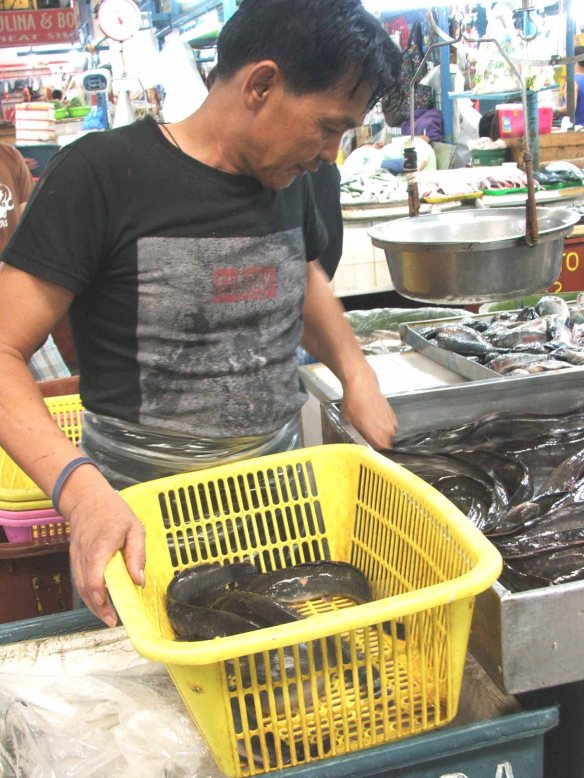
Sunday morning was a good time to shop at Farmers Market in Cubao. There were scarely about a dozen people shopping at the market and I was one of the first buyers of the day. The vendors were eager to lower prices for me to buy whatever they were selling that day. They wanted to move their produce right away or they will be stuck with overpriced items not selling. New produce arrives every day around 2pm, and the best time to get to those new arrivals is around 4pm.
I could not go later in the day, and in the morning, there was about 50 vendors open for trade. I had one recyclable bag on my shoulder, a lightweight purse and my camera to go and record this exercise in buying food on a budget. I made my rounds first, check out all the fish, vegetables and fruits. I wanted to buy only what is in season. If there are more than 5 vendors selling the same variety of seafoods, it will mean vendors will be under pressure to sell fast, and be willing to lower prices. I decided to go around and start haggling with several vendors. One priced her pompano fish at P350, and for the same size and quality, about 5 to a kilo, and another vendor lowered her price to P330, and finally a vendor accepted my bid for P300 a kilo for 5 pcs, of very stout, fresh pompano! Certain supermarkets charge as much as P500-600 for 5 fishes this size. Each fish weighs about 200 grams,( good for 1 person) and wonderful if grilled with just salt, pepper, and a drizzle of lemon.
The vendors on the aisle wait for customers who are in a hurry to shop. They may quote higher prices than the other vendors who are in the middle of this seafood area. Vendors will gut and scale, and clean fish for a buyer, unless the buyer prefers to do the dirty task later on their own. I prefer to have my fish prepared so I can have them ready for cooking when I get home.
One vendor showed me shrimps that are still moving, and another basin with live crabs. Naturally, the batch on ice costs 40% cheaper than those shrimps that are being sold alive.

Squids , clams , mussels are sometimes placed in buckets loaded with ice water to keep them looking fresh. Ask where these shellfish originated from, because there is a big difference in taste, depending on what part of the Philippines these came from.

A vendor , who has developed a good relationship with their customers are called, “suki“. A “suki” normally will have suppliers coming from areas around the Philippines, mainly fishponds in Northern, or Southern Luzon for certain types of seafoods, and shellfish should be harvested from the cleanest waters far from city areas, and bays near Metro Manila.

Crab claws are cheap and are easy to prepare, steamed, and served with a dipping sauce of vinegar, salt and pepper.
Picking up the crab can tell if it is heavy or very light. Lightweight crabs won’t have any meat inside. An adult crab should weigh about 200-300 grams. Water inside the shells makes the crab appear heavy. Live crabs keep water inside their armored body plates, or exoskeleton, so they can breathe even if they are on land. A “V” on the underside of a crab determines that the crab is a male. A “U” shape means the crab is a female.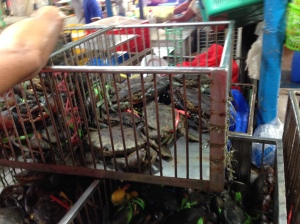
Fresh crabs are always sold alive at Farmers. Wild Alimango or mud crabs are found in mangroves, but the ones in markets are usually grown in fishponds. Be sure to buy medium size to large live crabs. These should be alert and feisty, and when when touched, these crustaceans will lift their pinches and pick a fight. Recent prices in the markets range from P250-350 per kilo, with females pricier especially if these crabs are full of roe.
Passing by the vegetable market, I was able to get some broccoli for P180 a kilo, and some nice, young asparagus, for P80 a bunch.
The fruit market was loaded with local pineapples, guavas, mangoes, guavas, guyabano ( soursop) watermelon, papayas, gua lychees, dragon fruits and imported apples, grapes , oranges. I felt my shopping bag was very heavy with all the fish and vegetables, so I had a few pesos left and used it to buy some honey pears. I could hardly drag my bag to the car, and even if I wanted to, carrying several kilos of raw fish was too heavy for me to continue. I was done shopping!

I bought 1 kilo of crab claws, 1/2 kilo “suahe” , or live shrimp, 1 kilo of Bilong-Bilong fish, 1 kilo of Pompano, 2 pcs. boneless bangus-Dagupan, and 1/3 kilo broccoli, 2 bunches of asparagus, and 4 honey pears. I got home in less than 40 minutes, and began preparing to cook the crab claws, fresh shrimp, as soon as I got to my kitchen. I made sure to wash off the shrimp and crab claws first in clear running water. Then these were put in the steamer, and anything else we could not eat for lunch, such the boneless bangus , was marinaded for the next day’s meal. Pompano was put in the refrigerator to be grilled the next evening. So I accomplished what I set out to do, in spending not more than 2 hours to shop around, and keep within my budget. I spent for all the vegetables and fruits, together with all the fish, were within my budget of $35.00!!!
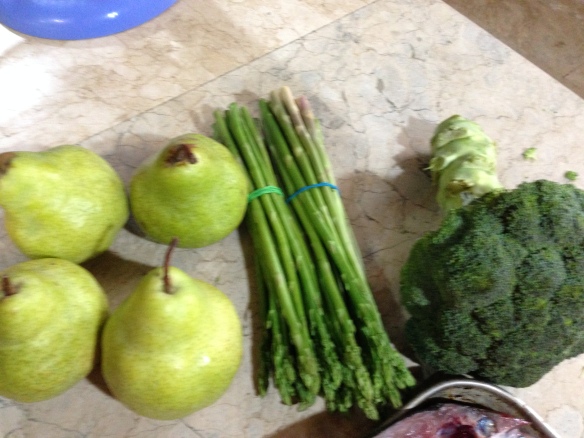
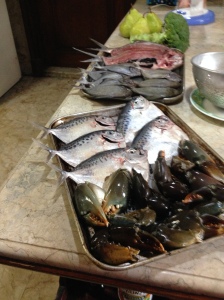
BETTY’S EXPERIENCE:
The seafood section of Farmer’s Market at the Araneta Center was an enlarging experience. If you don’t go to wet markets to buy fresh seafood like me (I’m allergic to fish so I don’t buy the stuff), you’ll find yourself entering a whole new world where you’ll meet a new class of hard-working people and the story behind the food you eat.
Enough all this quibbling about how thorny fish is, how tasteless it is, or whatever you have against fish — have you ever seen the bounty the sea has been bringing up everyday the past several years of your lifetime? And it hasn’t run out? If you can’t believe in a God that provides food for mankind, maybe you better believe in the sea’s capacity to feed mankind.
A young male vendor garbed in the familiar rubber boots and apron over his everyday jeans and t-shirt informed me that the “bagsakan” (from the word, “bagsak,” meaning to drop, but in market talk is used to describe the arrival of fresh supply which is dropped — or unloaded from trucks — at the service entrance of the market by suppliers) occurs at dawn and another after lunch daily. We were there at 10:00 A.M. and from the looks of the hustle and bustle of that Sunday morning, people were already there to buy their food from the day’s catch.
Armed with my trusty camera, I made my rounds taking shots. The vendors are used to photographers. One friendly vendor revealed that only yesterday, a Binibining Pilipinas (Miss Philippines) beauty candidate had her picture taken holding a huge salmon just shipped in from Norway.
Here’s the bounty from the seafood section of Farmer’s Market, Cubao. This wealth from the ocean arrives here after a long drive from another bagsakan in the province where the fishermen unload their catch after a long day in the sea or fish ponds. There are a lot of hard-working people behind that steamed oyster you like to slurp down with a bottle of beer or that juicy salmon steak drizzled with butter and garlic that you eat in a classy cafe. Here is the wealth of the sea spread out before you with no makeup on!




Walking away from this awesome experience left me a little guilty about how I downgrade fish all because I can’t eat it. Maybe I should try to introduce my body to it again. They’re the jewels of the sea. You don’t throw away jewels.



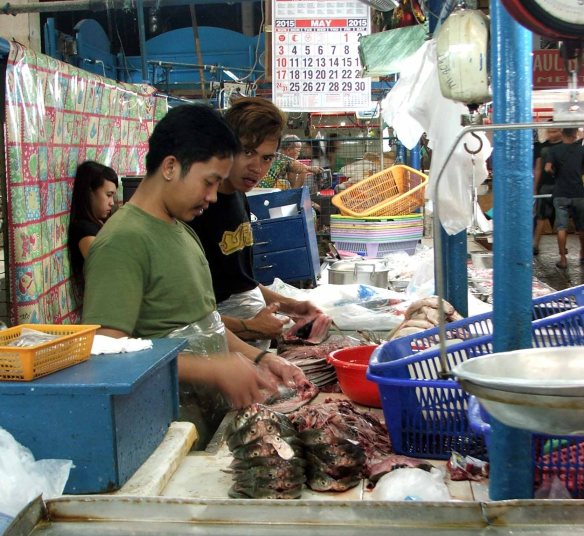



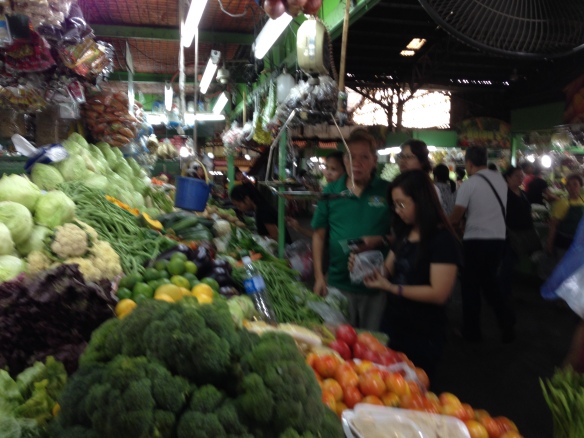




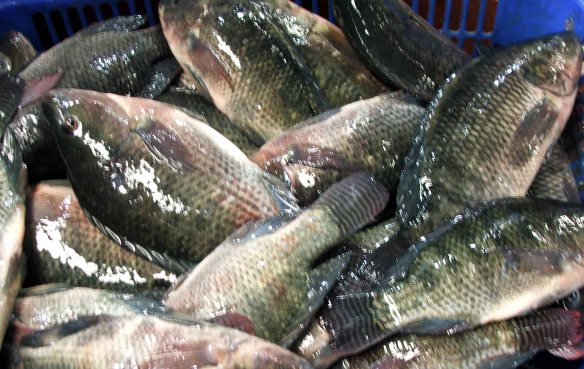
“The most important aspect that a person reading Philippine Observers, on wordpress.com, is that it shifts the focus from the place , and features more about their relationship with their topic. These two writers have different experiences even if they are at the same place, and both of them refuses to be confined by the pressures of the common info about the place, or the past history. They supply new information about the moments they are visiting a place. There is enough highlights mentioned in their articles, but anyplace they go, becomes a mere setting, albeit active and essential to the experience of the two “observers.” The focus is how the two women relate to what they are attracted to, rather than put themselves into the photos, in perpetual selfies, just to get attention. Philippine Observers captures the ordinary, and the odd, the hilarious, the seriousness, but all very candidly insightful — they express themselves through words carefully chosen from the bottomless cache of past memories, humour and stash of current tips and advice on both the pro and con of their experiences.”
Thank you! Glad you enjoy our blog
Thank you for your encouraging comments. Glad you enjoyed our blog.
Thank you for writing this. Very informative and extremely helpful. I was actually doing some research to find the best and cheapest markets in manila to source ingredients for my food venture. This saves me time from scouting different suppliers and different markets especially with Manila traffic getting worse. Even though I live in Malate, I’ll definitely head on to Farmer’s Market in Cubao to source my ingredients. Cheers to your blog!
If we take 1950, the population and tuna as the start point, the impact of man on fish stock is clear…
1950 – 2.5 billion people – 100% tuna stocks
2015 – 7 billion people – 30% tuna stocks
Great information, Thank you
what is the best time to go here?thanks!i want to buy some lobster.
Farmers Market opens around 8am to about 8pm daily
I believe it’s ‘suahe’ not suave…live shrimps.
thank you, the spelling has been corrected!
do they have talaba?
Yes Farmers Market has all kinds of seafood
yes I have seen oysters at Farmers Market
is it until now they stil have crab claws, tahong, sugpo?
Yes at Farmers Market Cubao
Yes, the vendors at Farmers Market have those seafood items.
They are open as early as 6 am.